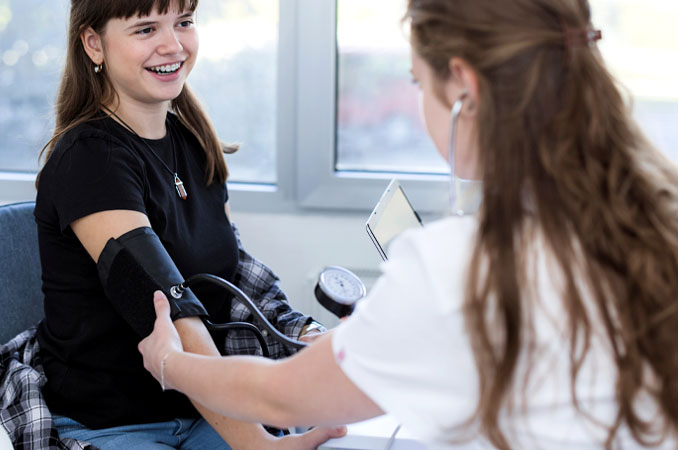
Type 1, 2 and Gestational Diabetes Explained
November is American Diabetes Month, and we’re bring awareness to the types of diabetes that affect over 37 million people in the United States. In the last 20 years, the number of adults diagnosed with diabetes has more than doubled.
What is diabetes? A chronic disease that occurs either when the pancreas doesn’t produce enough insulin or when the body can’t effectively use the insulin it produces. Your body breaks down the food you eat into sugar (glucose) and releases the glucose into the bloodstream. When your blood sugar rises, it signals the pancreas to release insulin, therefore providing the body’s cells with insulin to use for energy.
Types of Diabetes
There are three different types of diabetes:
-
Type 1 Diabetes: People with type 1 diabetes don’t make enough insulin in their body due to what is believed to be an autoimmune reaction. 5-10% of people who suffer from diabetes have type 1, and they must take insulin every day to survive. Some people have certain genes making them more susceptible to developing type 1 diabetes, but many people go on to live their life without it, even with the genes. This type of diabetes is not caused by diet and lifestyle habits. Currently, no one knows how to prevent type 1 diabetes, but it can be successfully treated by living a healthy lifestyle, managing your blood sugar and regular health checkups.
-
Type 2 Diabetes: People with type 2 diabetes create too much insulin in their body, leaving blood sugar levels in their body to rise and fall irregularly. 90-95% of people have type 2 diabetes, and it develops over many years. Contrary to type 1, type 2 diabetes can be prevented by healthy lifestyle habits such as maintaining a healthy weight, eating healthy foods and being physically active.
-
Gestational Diabetes: Gestational diabetes happens in pregnant women. Women who develop this type of diabetes don’t make enough insulin during their pregnancy. Their blood sugar levels usually go back to normal after the baby is born. This could leave a baby with a higher risk for health problems, and the mother more likely to develop type 2 diabetes later in life or after pregnancy. You may be able to prevent gestational diabetes by losing weight if you’re overweight and getting regular physical activity.
-
Prediabetes: 8 out of 10 people who have prediabetes don't even realize it. If you have a high-risk blood sugar level, but not enough to be diabetic, you have prediabetes. This can raise your risk for developing type 2 diabetes, getting heart disease or suffering a stroke. Your Healthy You! visit can help you identify potential health issues, such as prediabetes, before they become serious problems. Click here to learn more about the Healthy You! Benefit.
Symptoms of Diabetes include:
-
Urinating often, especially at night
-
Feeling very thirsty, more than normal
-
Losing weight without trying
-
Increased hunger
-
Blurry vision
-
Numb or tingling hands or feet
-
Weakness or fatigue
-
Dry and itchy skin
-
Cuts or wounds that heal slowly
-
Increased skin infections
Blue Cross & Blue Shield of Mississippi Members should use their annual Healthy You! wellness benefit to know their biometric numbers (blood sugar, blood pressure and cholesterol) and discuss their health numbers with their Blue Primary Care Network Provider. Members with high-risk numbers in blood sugar levels are encouraged to utilize their Color Me Healthy! benefit to monitor their numbers more closely. Click here to learn more about the Color Me Healthy! benefit. Those wanting to start a healthy lifestyle or need help with their wellness journey can meet with a Blue Cross & Blue Shield of Mississippi Wellness Coach for nutrition, exercise and lifestyle advice at no additional cost.
Sources:
National Institute of Diabetes and Digestive and Kidney Diseases




 Women's Health
Women's Health Eat Healthy
Eat Healthy Exercise
Exercise Health & Wellness Articles
Health & Wellness Articles